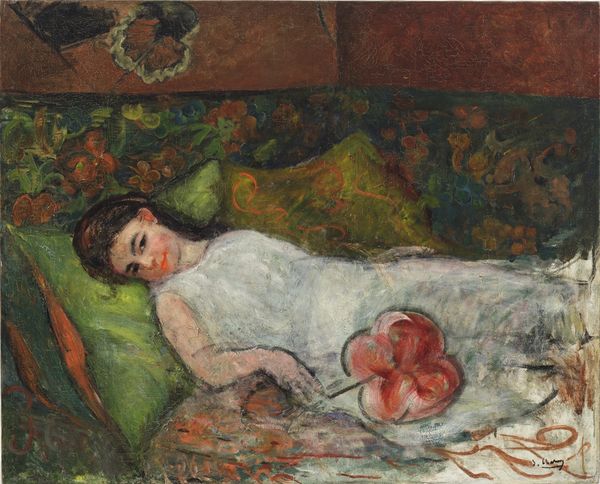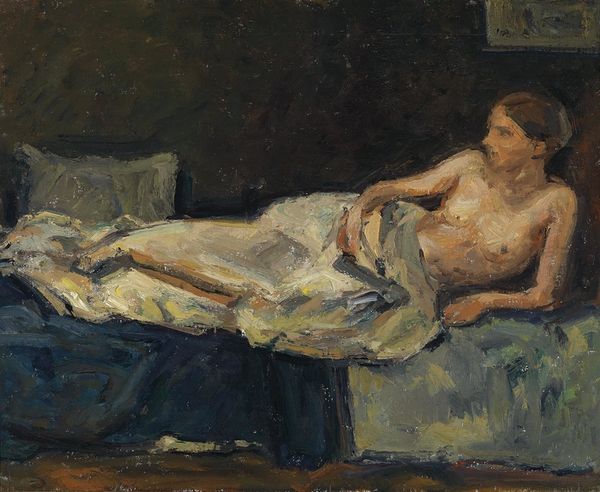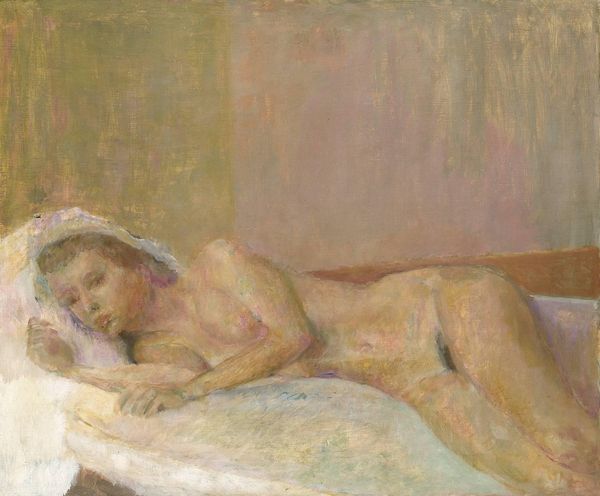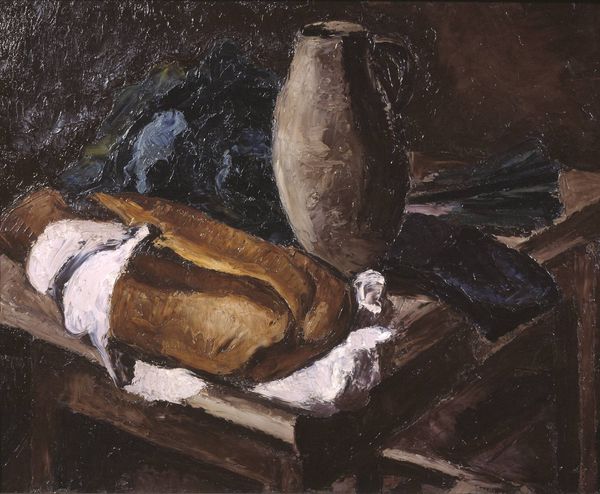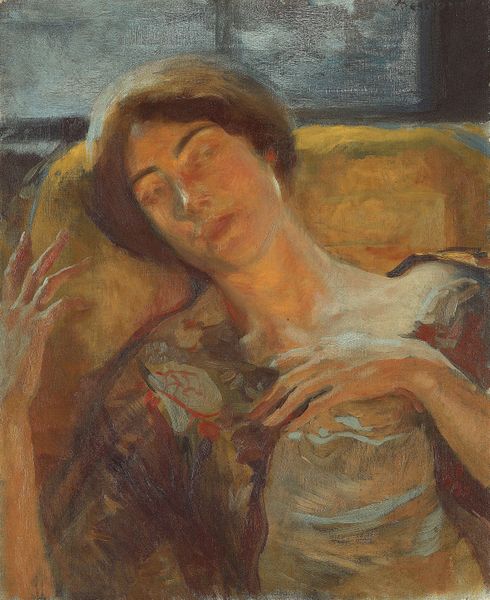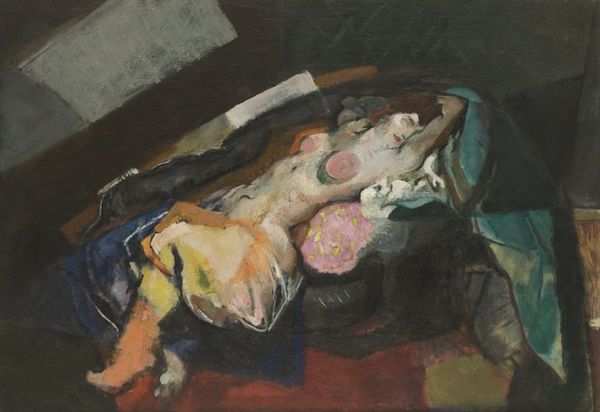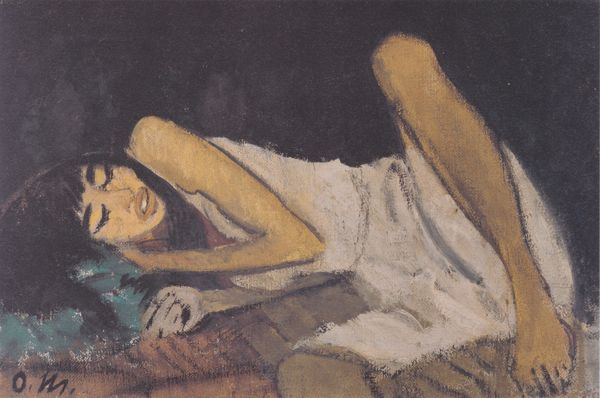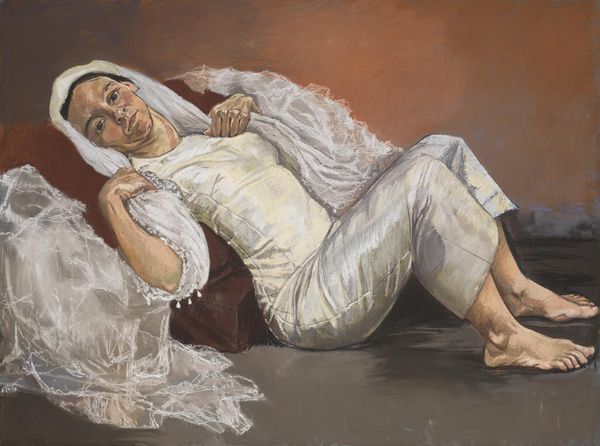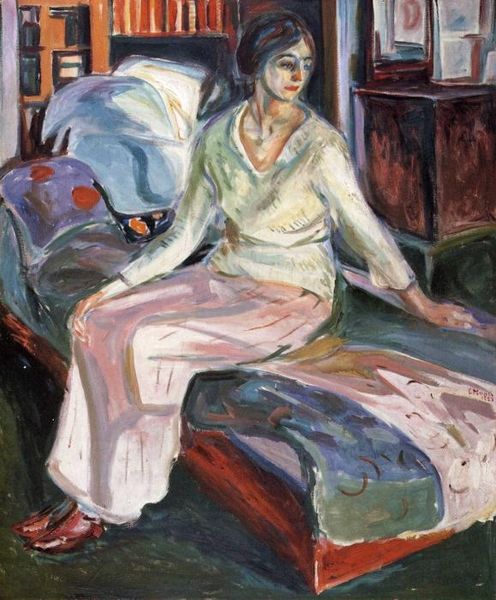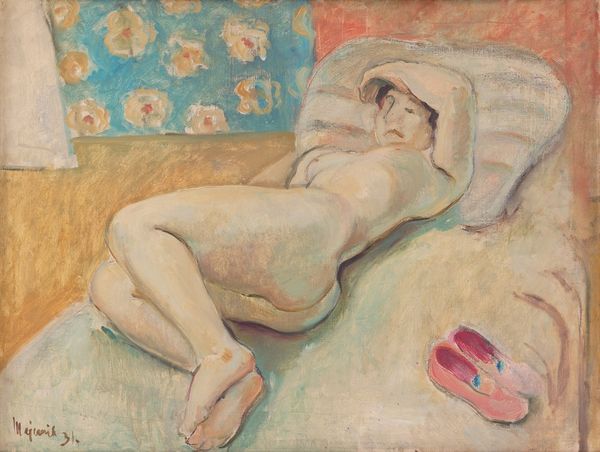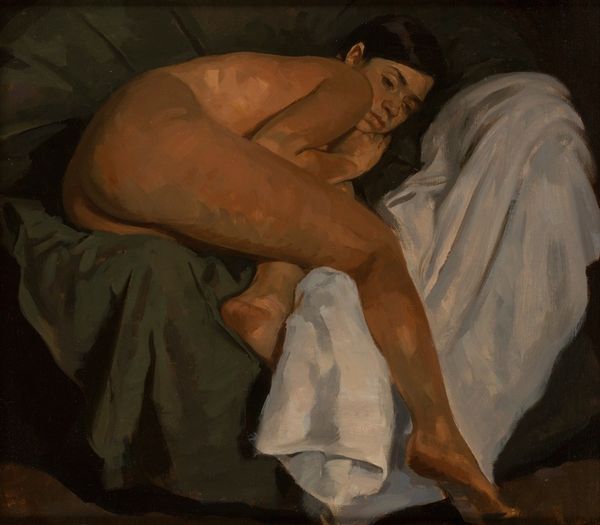
Copyright: Public Domain: Artvee
Curator: The somber hues and disquieting stillness in Edvard Munch's 1894 oil painting, "The Day After," create an immediate sense of melancholic introspection. Editor: Absolutely. There’s a palpable sense of exhaustion conveyed through the woman's languid pose and the discarded bottles and glasses on the table. The composition itself reinforces this mood. The oppressive weight of the dark browns almost swallows the figure in white. Curator: Indeed, Munch masterfully uses color and composition to amplify the social anxieties prevalent during his time. This piece offers a potent commentary on themes of disillusionment and the consequences of excess that society often brushes under the rug. Editor: Precisely. The white of the dress, though typically associated with innocence, seems to highlight the subject's vulnerability and dishevelment, further enhancing the visual tension. Curator: We must consider also that works such as "The Day After" were essential in the broader late-19th-century discourse regarding morality, illness, and female experiences, providing space to view alcoholism's effects on the family, when few artists were engaging in public discourse of it. Editor: Yes, the brushstrokes are quite expressive, especially when studying the arm—almost visceral. He leaves the haziness which amplifies the raw emotional energy radiating from the subject. Curator: "The Day After" encapsulates Munch's ability to confront his viewers with stark depictions of humanity's frailties and imperfections, while exploring themes like despair within his own world, but also social stigmas against illness which remain quite poignant, even today. Editor: I agree. Munch encourages viewers to see beyond what is immediately present and to reflect on the layers of lived experiences—the remnants of one of our many nights and the weight of that moment is palpable.
Comments
No comments
Be the first to comment and join the conversation on the ultimate creative platform.
